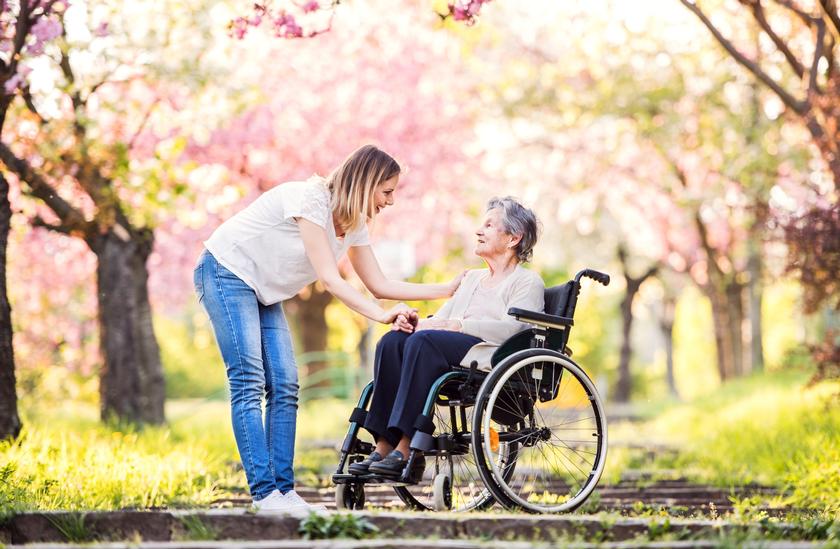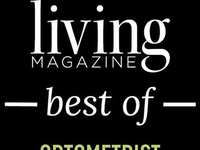- Categories :
- More
Empowering Senior Living With Disabilities: A Comprehensive Guide

The intersection of lifestyle adjustments and the need for suitable care options can be a significant concern for seniors with disabilities, prompting a nuanced look at assisted living solutions like homes for veterans with disabilities. Whether in the rolling hills of Virginia or the tranquil valleys of West Virginia, families must consider a myriad of factors, from life insurance policies to Medicaid benefits, to ensure their loved ones receive the support they deserve. Tailoring services to individual needs sets the stage for a dignified and comfortable living experience while navigating the nuances of financial planning becomes an indispensable part of the journey. Legal advocacy further provides a safeguard, ensuring that rights are upheld and voices heard. To delve deeper into maximizing the quality of life in these robust communities, continue exploring our comprehensive guide.
KEY TAKEAWAYS
- Assisted Living Balances Support With Independence for Seniors With Disabilities
- Facilities Vary in Services and Adapt to Regulatory Standards for Resident Care
- Technology Plays a Growing Role in Enhancing Quality of Life in Assisted Living
- Planned Activities and Community Integration Are Key to Resident Well-Being and Inclusion
- Financial Planning and Legal Advocacy Are Critical in Selecting Appropriate Assisted Living Accommodations
UNDERSTANDING ASSISTED LIVING FOR SENIORS WITH DISABILITIES
Amidst a tapestry of care options for seniors, assisted living presents a distinct blend of support and self-sufficiency, especially for individuals facing disabilities. By defining assisted living in the context of disabilities, one discovers a nexus of services designed to foster independence while ensuring the necessary level of assistance is readily available. Such facilities are tailored to meet diverse needs, encompassing everything from basic respite care to specialized support for those with dementia. With a focus on community integration, residents benefit from a supportive environment that honors their autonomy. Moreover, understanding the role of assisted living in promoting independence unveils how this model of care aligns with the varied and changing needs of seniors, while also navigating the complexities of insurance funding for long-term care. Assisted living, thus, emerges as a viable continuum between traditional home care and more intensive nursing facilities.
DEFINING ASSISTED LIVING IN THE CONTEXT OF DISABILITIES
In states such as Georgia and Connecticut, the definition of assisted living extends beyond mere housing solutions, evolving into a compassionate framework that addresses the challenges faced by seniors with disabilities. Facilities in these regions, and states like New Jersey, are adapting their services, aligning with regulatory mandates, to ensure residents receive care that respects their dignity and encourages as much independence as possible.
From the rolling farmlands of Iowa to the historic landscapes of Pennsylvania, assisted living communities cater specifically to the varying capabilities and conditions of their clientele. A focus on tailored care plans in these communities helps to ensure that individual needs are assessed and met with precision and compassion:
?
- Establishing a supportive environment for residents with varying degrees of mobility.
- Implementing personalized activities that nurture the social and cognitive skills of seniors facing challenges like dementia.
- Facilitating access to medical professionals and therapies that are instrumental in maintaining the health and well-being of those in assisted living.
THE ROLE OF ASSISTED LIVING IN PROMOTING INDEPENDENCE
Assisted living facilities play a pivotal role in encouraging autonomy for seniors with disabilities by providing a structured yet flexible framework that adapts to individual abilities and preferences. Through the meticulous coordination of health administration, the varied facets of daily living, from hygiene to medication management, are addressed in a manner that enables residents to preserve their independence safely and with dignity.
Seniors searching to find assisted living arrangements that accommodate disabilities will discover that many facilities are equipped to collaborate with various health insurance plans, easing the financial strain often associated with long-term care. Such partnerships underscore the commitment of these communities to promoting self-reliance among their residents, thus underscoring the inherent value of assisted living as a bridge toward sustained independence in the face of disability.
TAILORING SERVICES FOR DISABLED SENIORS IN ASSISTED LIVING
In the vibrant city of Los Angeles, seniors with disabilities find solace in assisted living facilities that go the extra mile in recognizing the spectrum of their needs. Acknowledging that disabilities may range from mobility constraints to chronic conditions requiring constant management, these facilities lean heavily on robust assessments to identify the specific requirements of each individual. The confluence of personalized care plans emerges as a lynchpin in delivering enhanced support, encompassing services from laundry assistance to easy access to the internet. This proactive approach is not only in line with the recommendations of the Office of Inspector General but also stands as a testament to the evolving landscape of senior care. Through meticulous customization, these plans transform assisted living into a haven for seniors determined to navigate their golden years with grace and vitality.
IDENTIFYING UNIQUE NEEDS OF SENIORS WITH DISABILITIES
At the core of assisted living for seniors with disabilities lies the acute recognition of each individual’s distinctive requirements. Professionals in the field prioritize gathering thorough information, which ranges from a resident’s preferred email address for communication to the intricate nuances of their daily routine and mental health needs. This critical information forms the bedrock for curating an environment where each elderly person can thrive while receiving the support they necessitate.
Moreover, as families use search queries like “retirement homes near me” to locate optimal living arrangements, they often seek reassurance that facilities will actively contribute to the holistic well-being of their loved ones. Assisted living communities, therefore, consistently evaluate factors such as the potential for employment within the community confines and the impact on residents’ mental health, demonstrating a steadfast commitment to fostering an enriching and inclusive living experience for seniors with disabilities.
CUSTOMIZING CARE PLANS FOR ENHANCED SUPPORT
Customizing care plans in assisted living facilities requires meticulous attention to detail and a commitment to the unique health needs of each resident. In New Hampshire, institutions holding a license to operate ensure that seniors with disabilities are provided with not just housing but a comprehensive strategy that addresses the full spectrum of their medical and social requirements.
- Collaboration with Medicare and other insurance providers streamlines financial dynamics and integrates various health services within the overarching personalized care plans.
- Facilities continually refine their offerings, utilizing feedback to make pivotal adjustments that enhance the day-to-day lives of seniors.
- Searches for “senior housing near me” yield options where individual care assessments are paramount, leading to improved support tailored to each resident’s situation.
Each resident’s health trajectory is considered, allowing for adjustments in care that are responsive to the evolving nature of their disabilities. The aim is always to enhance the quality of life within the context of each individual’s capabilities and aspirations.
NAVIGATING THE SELECTION PROCESS OF ASSISTED LIVING FACILITIES
In the search for an ideal assisted living facility, discerning families and seniors must pay close attention to essential elements that ensure a safe and beneficial environment, particularly for residents with disabilities. From the quiet streets of South Dakota to the bustling cityscape of Houston, determining the right nursing home involves more than just proximity and comfort; it encompasses a broad review of each facility’s dedication to safety and health standards as guided by the Centers for Disease Control and Prevention, especially regarding infection prevention and control. Forearmed with pertinent questions while exploring the various hubs of assistance, prospective residents gain insights into the quality of life and level of care provided. It is imperative for them not only to tour with open eyes but also to inquire deeply about how these facilities safeguard and empower the lives of those who live within their walls.
ESSENTIAL FEATURES TO LOOK FOR IN AN ASSISTED LIVING FACILITY
Crucial to the selection of an assisted living facility is the integration of comprehensive health care services that address the immediate and preventative medical needs of seniors. In places like Rhode Island, where an aging population demands high-quality care, facilities stand out for their seamless coordination with health care providers, ensuring residents have access to personalized medical attention.
For those scouring Atlanta for residential care that balances assistance and autonomy, independent living facilities near me stand as beacons of empowerment. These homes offer an environment where seniors with disabilities can flourish, providing essential support within a community designed to uphold the dignity and freedom of its residents.
QUESTIONS TO ASK DURING FACILITY TOURS
During an exploration of assisted living facilities, particularly for individuals with distinct care requirements, asking targeted questions related to the handling and confidentiality of medical and personal data is essential. Prospective residents and their families must understand how information is secured and accessed to ensure privacy and compliance with regulations.
- Does the facility have a robust system for protecting the privacy of residents’ personal and health data?
- Can families access care and health data easily and securely when needed?
Aligning with the culinary preferences and nutritional needs of seniors, inquiries about the menu offerings can provide insight into the facility’s commitment to tailored dietary management. Additionally, understanding the provisions for engaging in activities of daily and social living, as experienced in the vibrant communities of San Diego, invites a look into how a facility’s routine can enhance a resident’s overall well-being.
- What types of meals are offered, and how does the facility accommodate specific dietary needs?
- How does the assisted living community integrate activities that support and stimulate the activities of daily living?
It’s important to ask about the professional nursing care available, which will be central to the support provided for activities of daily living and overall health maintenance. Scrutinizing the level of nursing support will reveal how well-equipped a facility is to handle the spectrum of healthcare needs that residents may experience.
FINANCIAL PLANNING FOR ASSISTED LIVING WITH DISABILITIES
Amid the journey of establishing a supportive living situation for seniors with disabilities, financial considerations hold paramount importance. Grasping the details of costs involved in assisted living enables families and their elderly loved ones to strategize effectively. In regions such as South Carolina and Kansas, these expenses often encompass not only housing but also the specialized services necessary for day-to-day support, which may include medical oversight, medication management, and personal caregiver assistance. The quest for comprehensive financial planning is further complicated by the variety of insurance and aid options available, prompting frequent visits to FAQ sections as stakeholders seek transparency and understanding of the financial realm of assisted living.
UNDERSTANDING THE COSTS INVOLVED IN ASSISTED LIVING
Assisted living costs fluctuate considerably based on geographic location, with the zip code of each facility playing a pivotal role in determining monthly fees. A senior’s specific needs, including the number of meals provided, can also impact the overall financial commitment. For those in Minneapolis for instance, a place for mom cost may vary significantly, influenced by local market rates and the level of care required.
- Evaluating the cost differential within various zip codes helps in budgeting for an assisted living facility.
- Assessing the inclusion of meals and other services contributes to a comprehensive understanding of total costs.
When a parent or loved one is in need of assisted living accommodations, understanding the breakdown of costs becomes critical. Transparency regarding fees for room and board, as well as additional charges for personal care services and specialized medical needs, offers families a clearer picture of financial expectations and aids in long-term planning.
EXPLORING INSURANCE AND AID OPTIONS
In Arizona, where a growing elder demographic seeks quality care, engaging with the American Health Care Association can shed light on the nuances of insurance coverage and aid programs fitting for assisted living. Such information provides seniors and their loved with crucial details on how to navigate the financial complexities of accessing comprehensive care services.
Illinois, much like Miami, offers waiver programs designed to alleviate the financial burden for seniors requiring assisted living, presenting an alternative to traditional Medicaid coverage. These waivers are tailored to help cover the cost of services in assisted living facilities, offering a lifeline to families facing the challenges of securing affordable, yet quality, long-term care for their relatives with disabilities.
LEGAL RIGHTS AND ADVOCACY FOR DISABLED SENIORS IN ASSISTED LIVING
In the quest to empower seniors within the tapestry of assisted living, an intricate awareness of legal rights and mechanisms for advocacy is paramount. Boston, a city marked by its pioneering strides in geriatrics, stands as a beacon in the realm of elder care, emphasizing the significance of key legislation designed to protect the dignity and autonomy of those with disabilities. Seniors and their families, perhaps contemplating options such as a reverse mortgage to finance care, must navigate the legal landscapes safeguarding their right to quality support. This includes ensuring that assisted living facilities provide environments that address specific needs, such as accessible bathroom designs and comprehensive occupational therapy programs. The journey towards optimizing the quality of life for disabled seniors hinges on a clear understanding of these rights and how to assert them within the community, forging a path that is both respectful of their individuality and conducive to sustained independence.
KEY LEGISLATION PROTECTING SENIORS WITH DISABILITIES
Emergency management protocols play a pivotal role in safeguarding seniors with disabilities living in assisted facilities, a fact that’s underpinned by the legislative landscape of states like Oregon. Legislation ensures that life safety codes and comprehensive emergency plans are in place, not only to protect residents during crises but to sustain the secure, dignified living conditions they deserve every day.
Key to the framework of legal protections is the requirement for ongoing training in emergency management, ensuring that staff can effectively respond to urgent situations. In light of this, Oregon legislation compels assisted living facilities to regularly review and test emergency preparedness procedures, aligning with the life safety code to guarantee a swift, coordinated response when needed.
HOW TO ADVOCATE FOR RIGHTS WITHIN ASSISTED LIVING COMMUNITIES
In the quest for dignity and proper care within New Mexico’s assisted living communities, advocating for the rights of seniors with disabilities calls for a proactive approach. It begins with an informed understanding of local regulations that guide long term care facilities near me, ensuring that these institutions provide services and accommodations that meet the legal standards for health, safety, and welfare.
Residents of Baltimore’s assisted living establishments, alongside their families, can empower themselves by engaging in clear, open dialogues with facility administrators. These conversations should center on the resident’s experience, voicing their needs and expectations and ensuring that their rights are both acknowledged and actively protected.
- Gain an informed understanding of local long-term care regulations in your area.
- Initiate open dialogue with facility staff to discuss the resident’s experience and needs.
- Ensure the resident’s rights are acknowledged and upheld within the community.
In Colorado, as in other states, seniors in assisted living have the right to assert their preferences and choices regarding daily activities and healthcare. Advocacy in these situations involves not just the individuals and their families, but also can extend to ombudsman programs and legal services that specialize in defending the rights of the elderly and disabled within these communities.
INTEGRATING TECHNOLOGY FOR BETTER CARE IN ASSISTED LIVING
In the verdant landscapes of North Carolina and the expansive vistas of Idaho, long term care facilities are embracing a future where technology redefines the support provided to seniors with disabilities. Innovative assistive technologies are rapidly becoming part of everyday life in these communities, enabling residents to overcome barriers and maintain a higher level of independence. Meanwhile, the emergence of smart home devices has a profound impact on senior care, offering personalized adjustments to living spaces that were once the realm of science fiction. Both residents and caretakers are urged to familiarize themselves with the terms of service accompanying these technologies, as outlined in facility-provided PDF documents, to maximize the benefits while ensuring privacy and safety are uncompromised.
INNOVATIVE ASSISTIVE TECHNOLOGIES IN USE TODAY
Assisted living facilities in North Dakota are increasingly utilizing innovative assistive technology to provide enhanced care for seniors, particularly those requiring memory care. These technologies facilitate aspects such as payment processing, allowing for a seamless financial management experience for both the patient and the facility.
With advancements in technology tailored for senior care, patients now have access to digital solutions that optimize nutrition planning and monitoring, ensuring that their dietary needs are effectively met. These technological interventions empower residents by providing them with more control over their health and wellness within the supportive environment of assisted living communities.
THE IMPACT OF SMART HOME DEVICES ON SENIOR CARE
In Massachusetts, the adoption of smart home devices within assisted living facilities is revolutionizing the care provided to seniors, particularly those with memory impairments. These advanced systems streamline processes and routines, significantly reducing the mental strain on residents by offering automated reminders and alerts, which allows for more personalized and attentive care without imposing exorbitant fees.
Meanwhile, in Missouri and Seattle, where pioneering facilities have embraced such technology, the use of smart home devices is not just enhancing comfort but also bolstering safety. Sensors and monitoring tools integrated into residents’ living spaces provide caregivers with real-time data, ensuring swift response to both routine needs and emergency situations, ultimately fostering a sense of independence among seniors with disabilities.
STRATEGIES FOR SOCIAL INCLUSION IN ASSISTED LIVING
Within the fabric of assisted living, seniors with disabilities often encounter barriers to full social engagement, an issue that regulatory frameworks aim to dismantle. In locales like Denver, where the inclusivity of senior communities stands as a benchmark, strategies to encourage participation in social activities are not merely value additions but essential components of care. With consideration to the cost and logistics of integrating such programs, stakeholders champion the creation of vibrant, supportive communities. The ethos of these strategies extends to the vast plains of Wyoming, where isolation is combated through initiatives designed to weave residents into the tight-knit tapestry of communal life. “Senior communities near me” becomes not just a question of proximity but one of access to a network where connections matter, fostering a sense of belonging and active participation within the assisted living milieu.
ENCOURAGING PARTICIPATION IN SOCIAL ACTIVITIES
In Vermont’s assisted living communities, fostering a culture of inclusion involves providing frequent information on planned events specifically designed to integrate every resident, including veterans, into the social fabric. By prioritizing the dissemination of such information, these communities ensure no one is left unaware of the opportunities for engagement, thereby encouraging active participation.
Tennessee’s approach to social inclusion in assisted living goes beyond mere housekeeping and basic care, proactively creating spaces where seniors, regardless of disability, feel invited to join in communal activities. This ensures every individual, from the long-standing resident to the newest member, is given the chance to contribute to and benefit from the enriching social dynamics that define the experience of community living.
BUILDING A COMMUNITY: MAKING CONNECTIONS MATTER
In Texas, where the spirit of community runs as deep as the state itself, assisted living facilities are cultivating connections that extend beyond the walls of individual residencies. Through the integration of communal events and support groups, these facilities foster vital social interactions which are especially crucial for residents grappling with disease, ensuring that the journey through health challenges is not a solitary endeavor.
Recognizing the powerful bond between physical and social well-being, assisted living communities often partner with local physical therapy providers, not only to facilitate recovery but also to encourage communal participation. Data from the National Center for Health Statistics underline the importance of such initiatives, which are increasingly viewed as essential by families searching for ‘nursing homes near me’ that prioritize not only medical care but also the emotional and social enrichment of their loved ones.
ACCESSIBLE DESIGN FEATURES IN ASSISTED LIVING FACILITIES
Ensuring accessibility within senior housing emerges as a fundamental principle in nurturing independent and dignified lifestyles for seniors with disabilities. From the bustling urban center of Dallas to the tranquil communities of Alabama, facilities are focused on integrating accessible design modifications that align with therapeutic goals and support autonomy. Whether it’s adapting existing structures or incorporating novel features, accessibility remains a cornerstone in enabling seniors to engage fully with their environment. Nevada’s sunny retirement communities, much like the search results for ‘independent living near me’, embody the essence of accessible design, providing seniors with the means to partake in a life that’s both comfortable and empowering.
IMPORTANCE OF ACCESSIBILITY IN SENIOR HOUSING
In Philadelphia, the push for accessibility in senior independent living facilities is not merely a courtesy; it’s a policy-backed imperative that demands environments adaptable to the myriad needs of seniors with disabilities. Such a policy aligns with the vision of California’s progressive ethos in senior care, advocating for barrier-free housing that supports the independence and mobility of its elderly residents.
Scouring the vibrant terrains of senior living options, one finds that accessibility stands at the forefront of considerations, whether it’s in the sun-kissed courtyards of California or the culturally rich landscapes of New Mexico. ‘Senior independent living near me’ evolves into a search not just for proximity but for a place where thoughtful design permits seniors to live without restriction, in a community attentive to their unique needs.
EXAMPLES OF ACCESSIBLE DESIGN MODIFICATIONS
In Michigan, where the demographic of aging individuals is on the rise, health professionals and designers collaborate to create environments that enhance the quality of life for seniors with disabilities. By integrating accessible design modifications, these facilities enable a more inclusive and empowering form of aging in place.
- Widened doorways and hallways accommodate mobility devices, facilitating safe and comfortable navigation throughout the facility.
- Adjustable kitchen counters and sinks promote independence in personal meal preparation, a crucial aspect of daily living.
- Non-slip flooring materials are installed to minimize the risk of falls, ensuring a safer living space for those with mobility challenges.
- Emergency call systems within reach of beds and bathrooms provide peace of mind and immediate assistance when needed.
These design changes are not superficial upgrades; they are essential features that uphold dignity and foster a sense of autonomy among residents. They are a testament to the commitment of assisted living facilities to providing a supportive environment where seniors can thrive.
PREPARING FOR THE TRANSITION TO ASSISTED LIVING
The transition to assisted living heralds a significant change for seniors with disabilities, a period replete with both opportunities for growth and challenges of acclimatization. Tailoring this journey to suit the individual’s unique needs begins with actionable steps that ease the moving process, ensuring a well-orchestrated shift to their new living environment. Equally paramount is the availability of emotional and psychological support, providing a network of resources designed to guide residents through this phase with resilience and optimism. Together, these facets of transition planning pave the way to a harmonious integration into assisted living, promising an uplifting continuation of life’s narrative.
STEPS FOR A SMOOTH MOVE TO A NEW LIVING ENVIRONMENT
Embarking on the transition to assisted living requires deliberate organization and sensitivity to the emotional needs of seniors with disabilities. By initiating the process with a clear schedule and designated roles for family members or professional movers, one ensures that logistics are managed effectively, mitigating potential stress for both the individual and their loved ones.
Before the move, arranging a visit to the new living quarters allows the future resident to familiarize themselves with the space and even begin forming connections with staff and other community members:
- Confirm move-in dates and times with the assisted living facility to prevent any scheduling conflicts.
- Plan a gentle unpacking process, prioritizing personal items that will make the new space feel like home.
Attention to the emotional transition is critical, with support and counseling offered as a standard element of moving into a new living environment. Dialogue centered on the upcoming changes can provide reassurance and help seniors with disabilities maintain a sense of control over their relocation experience.
EMOTIONAL AND PSYCHOLOGICAL SUPPORT RESOURCES
Assisted living facilities often provide access to counselors and therapists who specialize in geriatric care, ensuring a robust support network for seniors adjusting to their new surroundings. This emotional scaffolding is crucial, facilitating a smoother transition and promoting the residents’ mental health as they navigate changes in their living situation.
Moreover, the integration of support groups within the assisted living community fosters a sense of camaraderie among residents, allowing them to share experiences and feelings with peers who understand their challenges. The collective empathy found in these gatherings is a powerful tool in bolstering individuals’ spirits and ensuring their emotional well-being during this pivotal life stage.
CONCLUSION
Empowering assisted living for seniors with disabilities, including assisted living in Oak Ridge North, ensures a delicate balance between autonomy and needed support within a community setting. By customizing care plans and implementing accessible design modifications, these facilities foster independence and enhance the quality of life for residents. Advocacy for residents’ rights and the integration of assistive technologies are essential in maintaining dignity and promoting inclusion. As such, assisted living becomes a key resource in assisting disabled seniors to live fulfilling and empowered lives.


















